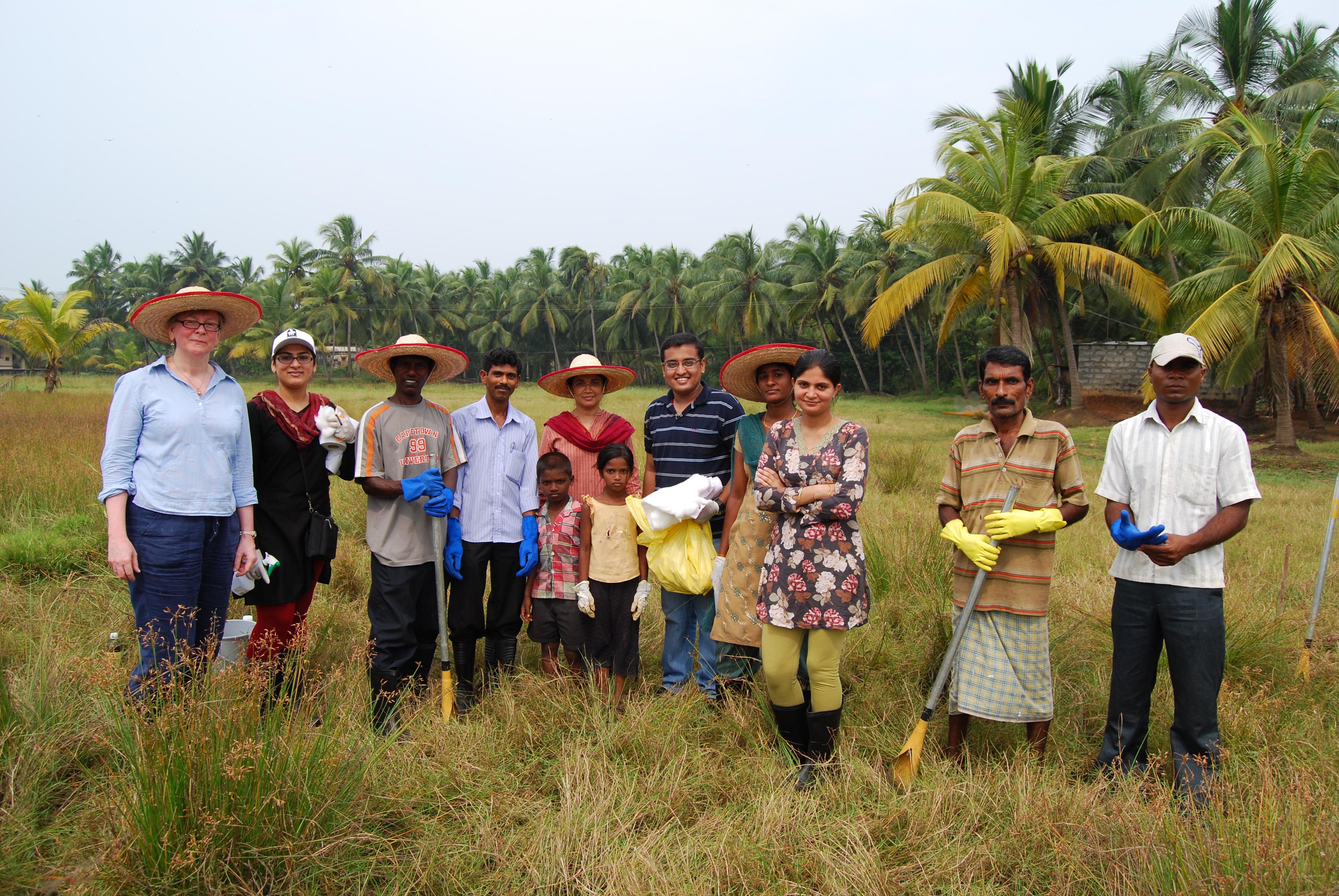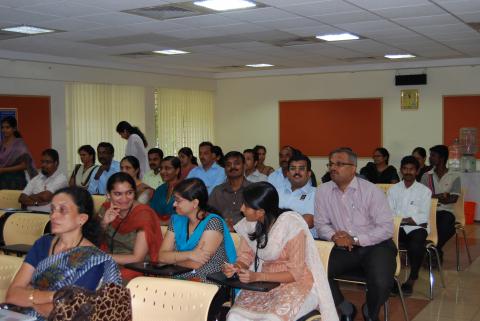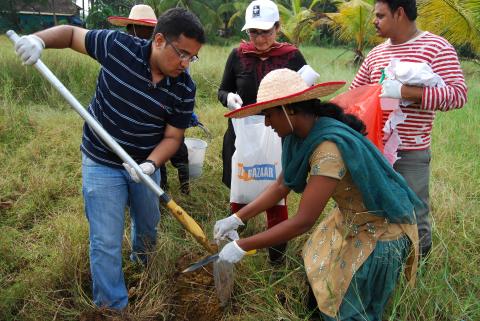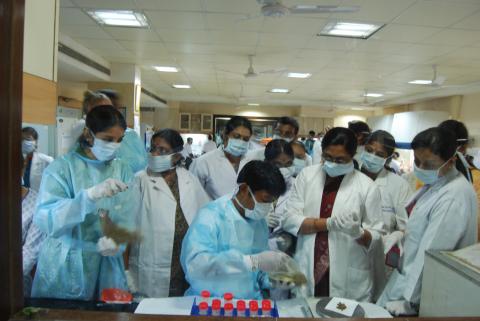
Submitted by Anna Davies on Fri, 30/11/2012 - 15:31
A tropical infection that can kill within 48 hours of clinical symptoms starting but that is easily misdiagnosed by doctors and the causative bacterium readily overlooked in the diagnostic microbiology laboratory is a bad combination, but a bacterium called Burkholderia pseudomallei fits the description. This is the cause of melioidosis, otherwise known as ‘the great mimicker’ because of its ability to cause clinical features that mimic other diseases including tuberculosis and cancer, and the ‘Vietnamese time bomb’, a term coined to describe asymptomatic carriage of the organism by US veterans for many years after returning from the conflict with Vietnam before disease symptoms finally developed.
B. pseudomallei is present in the environment across much of south and east Asia and northern Australia, and infection occurs as a result of inoculation through the skin, inhalation or ingestion. Most cases are reported from northeast Thailand where melioidosis causes as many deaths as tuberculosis, and far more than malaria and diarrhoeal diseases combined. The majority of people affected are in regular contact with soil and water, and some underlying diseases such as diabetes put people at much greater risk for developing the infection. Diagnosis is essential for treatment, as most antibiotics are not effective against B. pseudomallei, and treatment is required for 3 months.
Melioidosis in India
In India, there have been sporadic reports of melioidosis for the last 20 years and although more cases are now being detected, little is known about the true incidence of the disease. Lack of clinical awareness combined with difficulty in detecting the organism in the microbiology laboratory (it is readily mistaken as a contaminant on culture plates) means that although melioidosis is suspected to be endemic in regions of India, there are little data to support this.
Dr Chiranjay Mukhopadhyay, a Professor of Microbiology at Manipal University, has been working for several years to raise awareness and understanding of the disease in India. Working together with Sharon Peacock, Professor of Clinical Microbiology at the University of Cambridge and Dr Direk Limmathurotskal at Mahidol University in Thailand – both world experts in Melioidosis- he decided to develop a hands-on training workshop. Supported by funding provided by a Cambridge - Hamied Visiting Lecture Scheme award to Professor Peacock, a 3 day training workshop was delivered in October 2012.
Eighteen senior microbiologists and clinicians from across Southern India attended, each bringing their own experiences of melioidosis which ranged from single patients to 20-30 cases each year. A series of lectures on the clinical manifestations, diagnosis and treatment of melioidosis were supplemented by hands-on laboratory sessions, which provided the opportunity to see B. pseudomallei colonies first hand and gain practical experience on its identification.
Time to start digging
Digging in a muddy field may seem like an unusual activity for a clinical microbiologist, but soil sampling to detect B. pseudomallei is an integral part of establishing the regions of geographic risk for melioidosis. Collaborators at Mahidol University have developed a simple protocol for soil sampling and detection of B. pseudomallei. Using this, the workshop delegates got hands on experience in the field of a local farmer whose daughter had contracted melioidosis – the first systematic soil sampling project for B. pseudomallei undertaken in India.
After donning gloves, hats and boots, workshop attendees set about digging, carefully cleaning each spade between sample sites and collecting soil samples into numbered bags. Their work did not go unnoticed – at the behest of the farmer who was keen to raise awareness of melioidosis, local politicians attended and the media came to interview and film participants, which made the regional news stations, and local and national press. After a hot and sticky morning, the delegates returned to the microbiology laboratory to set about processing the soil samples.
With support from the University of Cambridge and Mahidol University, Dr Mukhopadhyay is now working to establish the Indian Melioidosis Network, which will be supported by the international melioidosis website.The network will work to collect data on melioidosis cases in India, and provide a forum for knowledge exchange between members, as well as disseminating up to date information on the latest developments in diagnosis and treatment of Melioidosis in India. Having used funds from the Yusuf-Hamied Visiting Lecture Scheme to obtain the equipment for soil sampling (spades, trowels and wellington boots), this will also be made available to network members to encourage future soil sampling.


 The delegates spent a day learning about Burkholderia pseudomallei, its clinical presentations, laboratory diagnosis, and soil sampling.
The delegates spent a day learning about Burkholderia pseudomallei, its clinical presentations, laboratory diagnosis, and soil sampling. Putting theory into practice! Each soil sample is taken at a depth of 30cm (indicated by the black line on the spade) - with 100 samples to take, that's a lot of digging!
Putting theory into practice! Each soil sample is taken at a depth of 30cm (indicated by the black line on the spade) - with 100 samples to take, that's a lot of digging!